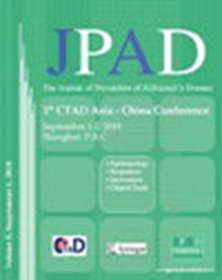Dementia Prevention: optimizing the use of observational data for personal, clinical, and public health decision-making.
IF 7.8
3区 医学
Q1 CLINICAL NEUROLOGY
引用次数: 12
Abstract
Worldwide, over 35 million people suffer from Alzheimer's disease and related dementias. This number is expected to triple over the next 40 years. How can we improve the evidence supporting strategies to reduce the rate of dementia in future generations? The risk of dementia is likely influenced by modifiable factors such as exercise, cognitive activity, and the clinical management of diabetes and hypertension. However, the quality of evidence is limited and it remains unclear whether specific interventions to reduce these modifiable risk factors can, in turn, reduce the risk of dementia. Although randomized controlled trials are the gold-standard for causality, the majority of evidence for long-term dementia prevention derives from, and will likely continue to derive from, observational studies. Although observational research has some unavoidable limitations, its utility for dementia prevention might be improved by, for example, better distinction between confirmatory and exploratory research, higher reporting standards, investment in effectiveness research enabled by increased data-pooling, and standardized exposure and outcome measures. Informed decision-making by the general public on low-risk health choices that could have broad potential benefits could be enabled by internet-based tools and decision-aids to communicate the evidence, its quality, and the estimated magnitude of effect.痴呆症预防:优化个人、临床和公共卫生决策中观察数据的使用。
全世界有3500多万人患有阿尔茨海默病和相关的痴呆症。这一数字预计将在未来40年翻三倍。我们如何改进证据,支持降低后代痴呆症发病率的策略?痴呆的风险可能受到运动、认知活动、糖尿病和高血压的临床管理等可变因素的影响。然而,证据的质量有限,目前尚不清楚减少这些可改变的危险因素的具体干预措施是否能反过来降低痴呆的风险。虽然随机对照试验是因果关系的黄金标准,但长期预防痴呆症的大部分证据来自观察性研究,而且很可能继续来自观察性研究。尽管观察性研究有一些不可避免的局限性,但它在预防痴呆症方面的效用可能会得到改善,例如,通过更好地区分验证性研究和探索性研究,提高报告标准,通过增加数据池来投资有效性研究,以及标准化的暴露和结果测量。通过基于互联网的工具和决策辅助工具,公众可以就可能具有广泛潜在利益的低风险健康选择做出知情决策,以传达证据、证据质量和估计的影响程度。
本文章由计算机程序翻译,如有差异,请以英文原文为准。
求助全文
约1分钟内获得全文
求助全文
来源期刊

Jpad-Journal of Prevention of Alzheimers Disease
CLINICAL NEUROLOGY-
自引率
7.80%
发文量
85
期刊介绍:
The JPAD « Journal of Prevention of Alzheimer’Disease » will publish reviews, original research articles and short reports to improve our knowledge in the field of Alzheimer prevention including : neurosciences, biomarkers, imaging, epidemiology, public health, physical cognitive exercise, nutrition, risk and protective factors, drug development, trials design, and heath economic outcomes.
JPAD will publish also the meeting abstracts from Clinical Trial on Alzheimer Disease (CTAD) and will be distributed both in paper and online version worldwide.
 求助内容:
求助内容: 应助结果提醒方式:
应助结果提醒方式:


